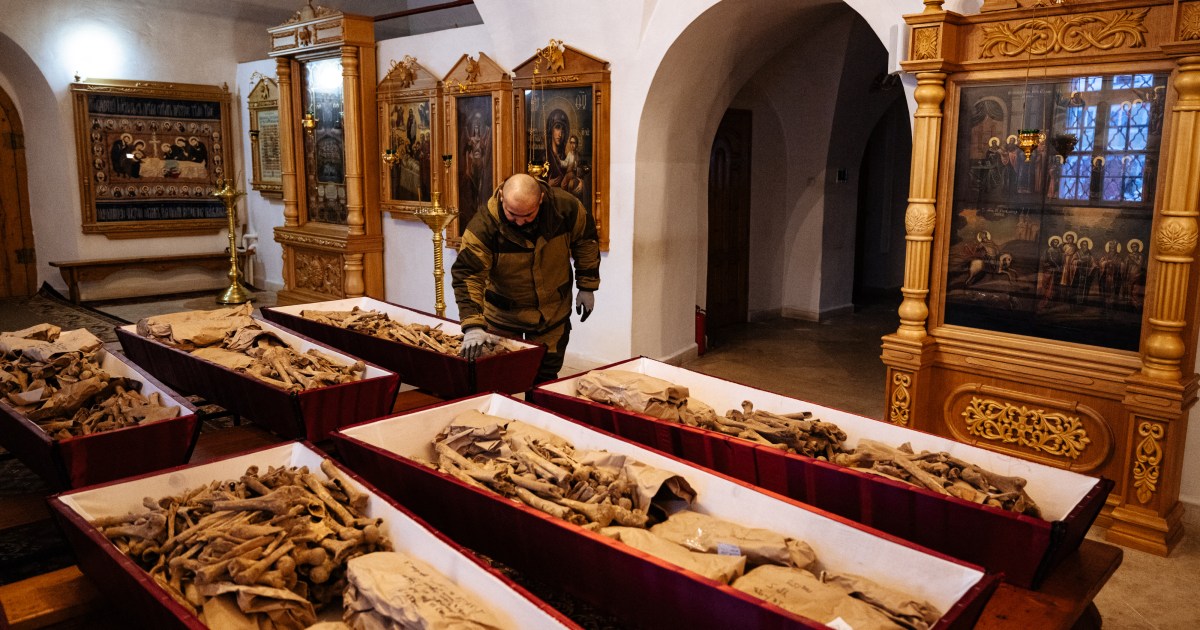Today, Saturday, a burial ceremony was held for the remains of 126 Russian and French soldiers near the battlefield in Viasma, who fell during the withdrawal of Napoleon Bonaparte from Russia in 1812, in a moment of Franco-Russian reconciliation.
On the 200th anniversary of Napoleon's death, the remains of soldiers were buried in a mass grave between the cities of Smolensk and Moscow in Russia, in 8 coffins, in the presence of grandchildren of the old Russian and French military leaders.
Under the snowfall and the temperature fell below 15 degrees Celsius, men carried coffins draped with flags at a cemetery in Vyazma, more than 200 kilometers west of Moscow.
The coffins were buried in the snow-covered ground by artillery fire, in front of about 100 men in uniform of that afternoon.
The remains belong to 120 soldiers, 3 women who followed the soldiers to sell them food, and 3 boys, most likely drummers, who fell on the sidelines or during the Battle of Viasma on November 23, 1812, two weeks after the start of the withdrawal, which reached its climax soon after, and was terrifying With the crossing of the Berezina River, which caused a large number of deaths.
A team of Russian and French archaeologists found the remains in 2019 southwest of the city of Viasma, which has a population of 52,000.
Pierre Malinowski, head of the Foundation for the Development of Historical Franco-Russian Initiatives - which undertook the excavation and identification of the remains - said, "All these Russian and French soldiers, who were once enemies, will be buried together as friends, in the presence of the descendants" of the participants from both sides of the conflict.
Before their burial, the remains remained in a chapel in the Monastery of John the Baptist, which was built in 1536 and looted by Napoleon's "Great Army" upon his withdrawal from Russia in 1812.
The site of the remains was found about 10 years ago during excavations belonging to a construction site in southwestern Viasma, and local history buffs initially thought it was one of the many mass graves from World War II scattered across western Russia.
Finally, an expert report from the Russian Academy of Sciences confirmed that the remains belong to Napoleon campaign victims between the ages of 30 and 39.
The head of the team of archaeologists, Alexander Khokhlov, explained that the presence of metal buttons on the uniform allowed to ensure that some of the dead "belonged to the 30th and 55th infantry regiments and the 24th light regiment of Napoleon's army.
The military attache at the French embassy in Moscow, Evan Martin - who participated in the ceremony - told the French press that it was "a symbolic event that forms part of the common history" of our two countries.

